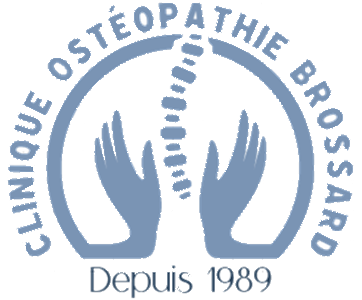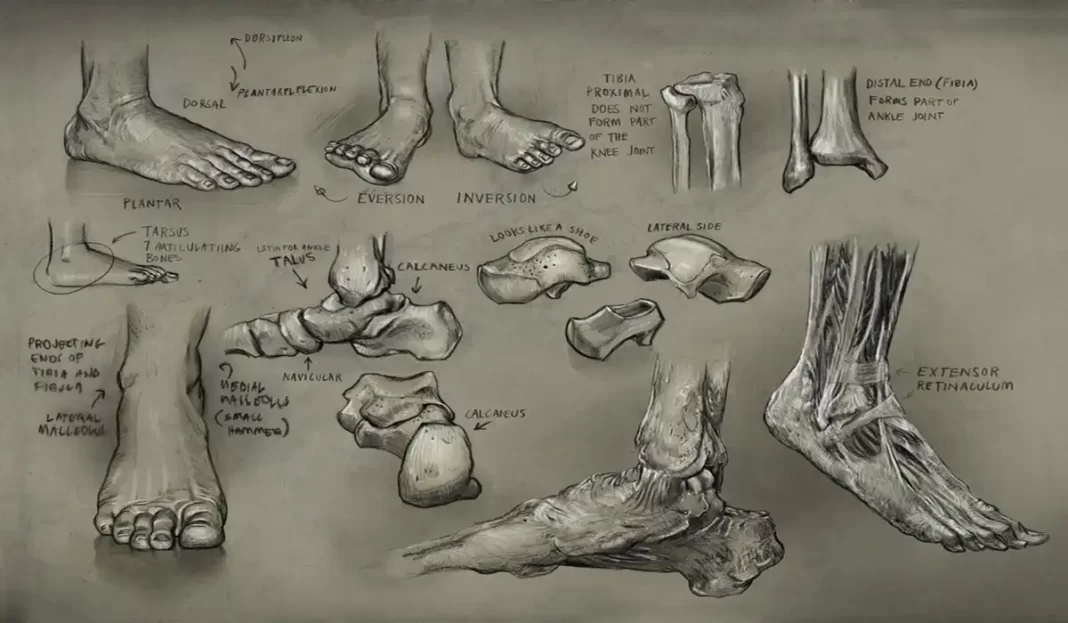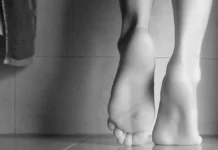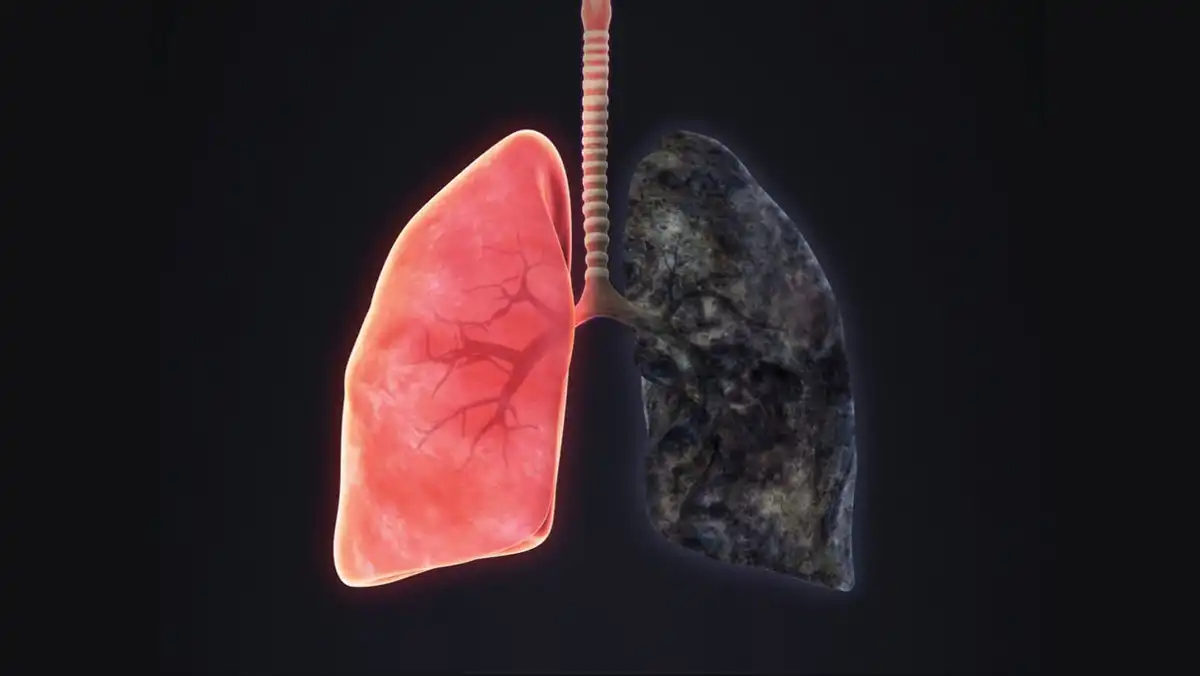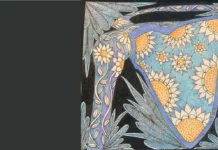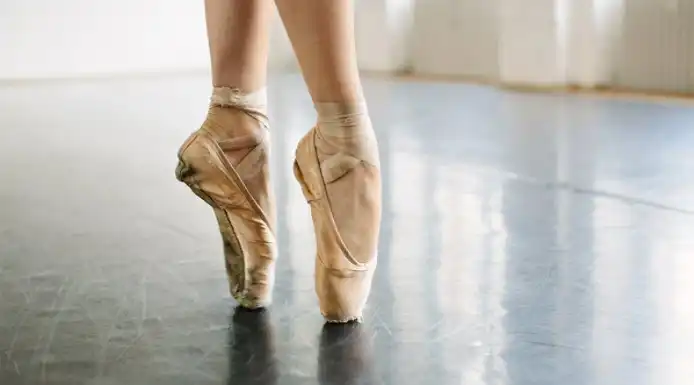Introduction to Pes Cavus: Understanding the High Arch
Pes cavus, or high arch foot, is a foot deformity where the arch of the foot is abnormally elevated. Unlike pes planus (flat feet), where the arch is diminished or absent, pes cavus is characterized by an exaggerated arch that can affect the biomechanics of walking and running. This condition can lead to significant discomfort, instability, and a higher risk of injuries. Pes cavus can be a result of various factors, including genetic predisposition, underlying neurological conditions, or past injuries. The condition is often less common than flat feet but can be more problematic due to the severe pressure it places on specific areas of the foot.
One of the primary concerns with pes cavus is that it often leads to a misdistribution of body weight across the foot. This imbalance can cause increased pressure on the heel and the ball of the foot, leading to pain, calluses, and in some cases, ulcerations. The rigidity of the high-arched foot also makes it less capable of absorbing shock, which can exacerbate the discomfort and lead to further complications such as stress fractures.
Understanding the root causes of pes cavus is crucial for both diagnosis and treatment. The condition can be congenital or acquired. Congenital cases often have a strong genetic component, with the condition being passed down through families. In these cases, the high arch is present from an early age and may progress over time. Acquired cases of pes cavus are often associated with neurological disorders such as Charcot-Marie-Tooth disease, cerebral palsy, or stroke, where muscle imbalance and nerve dysfunction lead to the development of a high arch over time.
The symptoms of pes cavus can vary significantly depending on the severity of the condition. Some people may experience mild discomfort, while others may suffer from severe pain and instability. Common symptoms include pain in the arch of the foot, frequent ankle sprains, and difficulty finding shoes that fit properly. Over time, the condition can lead to more serious complications such as hammertoes, claw toes, or plantar fasciitis.
Diagnosing pes cavus typically involves a thorough physical examination by a healthcare professional, often supplemented by imaging tests such as X-rays or MRI scans. These tests help to assess the structure of the foot and identify any underlying causes. In cases where a neurological disorder is suspected, additional neurological testing may be required to determine the best course of treatment.
Early intervention is key to managing pes cavus effectively. Conservative treatments, including the use of orthotic devices, specialized footwear, and physical therapy, can help alleviate symptoms and prevent the condition from worsening. In more severe cases, surgical intervention may be necessary to correct the deformity and relieve pain. Surgery can involve procedures such as tendon transfers, osteotomies (bone cuts), or fusion of certain joints to reduce the arch and stabilize the foot.
Preventative measures, such as maintaining a healthy weight, choosing supportive footwear, and avoiding high-impact activities that exacerbate symptoms, can also play a significant role in managing pes cavus. For those with a genetic predisposition, early monitoring and intervention can help prevent the condition from becoming more severe over time.
In summary, pes cavus is a complex condition that requires careful diagnosis and a personalized treatment plan. Whether congenital or acquired, understanding the causes and potential complications of pes cavus is essential for effective management. By addressing the condition early and adopting appropriate preventative measures, individuals with pes cavus can maintain mobility and reduce the risk of further complications.

Risk Factors for Developing Pes Cavus
While pes cavus can be congenital, meaning it is present at birth due to genetic factors, there are several risk factors that can increase the likelihood of developing this condition over time. Understanding these risk factors is crucial for both prevention and early intervention.
- Genetic Predisposition: One of the most significant risk factors for pes cavus is genetics. If a family member, particularly a parent, has pes cavus, there is a higher likelihood that other family members may develop the condition. This genetic predisposition often results in a structural abnormality in the foot from a young age. The inheritance pattern can vary, with some cases showing a strong familial link, while others may present sporadically.
- Neurological Disorders: Pes cavus is commonly associated with neurological conditions, such as Charcot-Marie-Tooth disease, cerebral palsy, spina bifida, and muscular dystrophy. These disorders can lead to muscle imbalances, where certain muscles in the foot and leg become weak or overactive. The resulting muscle imbalance can pull the foot into a high arch position. Neurological disorders are often progressive, meaning that the high arch can worsen over time, leading to increased complications and the need for medical intervention.
- Foot Injuries: Injuries to the foot, particularly those involving the midfoot or hindfoot, can lead to the development of pes cavus. Fractures, ligament tears, or severe sprains can alter the biomechanics of the foot, leading to an abnormal distribution of pressure and eventually resulting in a high arch. Post-traumatic pes cavus can occur when the foot does not heal properly or when compensatory changes occur in response to the injury.
- Occupational and Lifestyle Factors: Certain occupations and lifestyles that involve prolonged standing, walking on hard surfaces, or repetitive high-impact activities can contribute to the development of pes cavus. Athletes, dancers, and individuals in physically demanding jobs may be at higher risk due to the constant strain placed on their feet. Over time, the foot’s arch may become exaggerated as a result of this repetitive stress.
- Age: Age can also be a contributing factor. As individuals age, the likelihood of developing foot deformities such as pes cavus increases, especially if they have underlying conditions like arthritis or have experienced long-term wear and tear on their feet. The aging process can lead to changes in the structure and function of the foot, making it more susceptible to conditions like pes cavus.
- Footwear Choices: Wearing poorly fitting shoes, particularly those that are too tight or have high heels, can exacerbate the risk of developing pes cavus. Shoes that do not provide adequate support or that force the foot into an unnatural position can lead to the progressive worsening of the arch. Over time, this can contribute to the development of a high arch, especially if there is already a predisposition to the condition.
- Weight and Body Mechanics: Excessive body weight can place additional stress on the feet, potentially contributing to the development of pes cavus. Obesity can exacerbate existing foot conditions or lead to the development of new ones by increasing the load the feet must bear. Additionally, individuals with poor body mechanics or abnormal gait patterns may be more prone to developing pes cavus due to the uneven distribution of weight and pressure on the feet.
- Pre-existing Foot Conditions: Certain pre-existing foot conditions, such as flat feet that progress to a high arch due to compensatory changes, can increase the risk of pes cavus. Conditions like plantar fasciitis, which involve chronic inflammation of the foot, can also contribute to the development of a high arch over time.
Prevention of Pes Cavus: Strategies and Tips
Preventing pes cavus, or managing its progression, involves a combination of lifestyle modifications, footwear choices, and targeted exercises. While some factors like genetics or underlying neurological conditions cannot be controlled, there are several proactive steps individuals can take to reduce the risk of developing pes cavus or mitigate its impact.
- Choosing the Right Footwear:One of the most effective ways to prevent pes cavus or manage its symptoms is through the selection of appropriate footwear. Shoes should provide adequate arch support and cushioning to distribute weight evenly across the foot. High heels and shoes with narrow toe boxes should be avoided as they can exacerbate the arch and lead to additional foot deformities such as hammertoes or bunions. Instead, opt for shoes with a wide toe box, low heels, and good arch support. Orthotic inserts can also be beneficial in providing additional support and cushioning.
- Regular Foot Exercises: Engaging in regular foot exercises can help strengthen the muscles and ligaments in the foot, promoting better alignment and reducing the likelihood of developing pes cavus. Exercises such as toe curls, arch lifts, and calf stretches can help maintain the flexibility and strength of the foot’s arch. Additionally, stretching exercises for the Achilles tendon and plantar fascia can alleviate tension and prevent the arch from becoming too rigid.
- Maintaining a Healthy WeightL Excessive body weight can put undue stress on the feet, leading to the development of pes cavus or exacerbating existing conditions. Maintaining a healthy weight through a balanced diet and regular exercise can help reduce the load on the feet and prevent the arch from becoming exaggerated. Weight management is particularly important for individuals with a genetic predisposition to pes cavus or those with pre-existing foot conditions.
- Avoiding High-Impact Activities: High-impact activities, such as running on hard surfaces or engaging in sports that involve repetitive jumping, can place excessive strain on the feet, contributing to the development of pes cavus. While regular physical activity is important, it’s essential to choose activities that are low-impact and gentle on the feet. Swimming, cycling, and walking on soft surfaces are excellent alternatives that can keep the body active without putting undue stress on the feet.
- Regular Foot Assessments: For individuals with a family history of pes cavus or those who have experienced foot injuries in the past, regular foot assessments by a healthcare professional are crucial. Early detection of any changes in foot structure can lead to timely intervention, preventing the progression of pes cavus. Podiatrists can provide personalized advice on footwear, exercises, and other preventive measures based on the individual’s foot structure and risk factors.
- Addressing Foot Injuries Promptly: Foot injuries, particularly those involving the ligaments or bones, should be addressed promptly to prevent long-term complications such as pes cavus. Even minor injuries like sprains or strains can lead to changes in foot mechanics if not properly treated. Rest, ice, compression, and elevation (RICE) are essential first-aid steps for foot injuries, followed by appropriate rehabilitation and possibly the use of supportive footwear or orthotics.
- Monitoring and Managing Neurological Conditions: For individuals with neurological conditions that predispose them to pes cavus, managing the underlying condition is key to preventing the development or worsening of the high arch. Regular check-ups with a neurologist, physical therapy, and the use of orthotic devices can help manage symptoms and prevent complications. Early intervention in neurological conditions can also reduce the impact on foot mechanics.
- Custom Orthotic Devices: For individuals at high risk of developing pes cavus, custom orthotic devices can provide the necessary support and cushioning to prevent excessive arching. These devices are tailored to the individual’s foot structure and can be used in conjunction with supportive footwear. Custom orthotics are particularly beneficial for those with existing foot deformities or those who engage in activities that put stress on the feet.
- Education and Awareness: Educating individuals about the risks and prevention strategies for pes cavus is essential. Awareness of the condition, its causes, and the importance of early intervention can empower individuals to take proactive steps to protect their foot health. Healthcare professionals can play a significant role in providing this education, particularly for patients with a family history of foot deformities or those involved in high-risk activities.
Differential Diagnosis of Pes Cavus: Identifying Similar Conditions
Pes cavus, characterized by a high arch, can present with symptoms that overlap with other foot conditions. Accurate diagnosis is crucial to ensure appropriate treatment and management. Differential diagnosis involves distinguishing pes cavus from other conditions that may present with similar symptoms, such as foot pain, instability, and deformities.
- Pes Planus (Flat Feet): The most apparent opposite of pes cavus is pes planus, or flat feet, where the arch of the foot is either absent or significantly reduced. While pes cavus features a high arch, pes planus involves the collapse of the arch, leading to a different set of biomechanical issues. Flat feet are often more flexible, while pes cavus is rigid. However, the pain associated with both conditions can be similar, particularly when it comes to foot fatigue and strain. Diagnosing between the two conditions typically involves a physical examination and imaging studies, such as X-rays, to assess the arch structure.
- Plantar Fasciitis: Plantar fasciitis is a common condition that causes heel pain, often due to inflammation of the plantar fascia, a thick band of tissue that runs across the bottom of the foot. While plantar fasciitis can occur in individuals with normal, flat, or high arches, it is often seen in those with pes cavus due to the increased strain on the plantar fascia. However, plantar fasciitis can also occur independently of pes cavus. A key distinguishing factor is that plantar fasciitis typically causes pain in the heel, particularly with the first steps in the morning, whereas pes cavus may cause pain in different areas of the foot, depending on where the pressure is most concentrated.
- Metatarsalgia: Metatarsalgia refers to pain in the ball of the foot, often due to overuse or repetitive stress. Individuals with pes cavus are particularly prone to metatarsalgia because the high arch can cause excessive pressure on the metatarsal heads (the bones in the ball of the foot). However, metatarsalgia can also be caused by other factors, such as poorly fitting shoes, high-impact activities, or foot deformities like hammertoes. A differential diagnosis involves a thorough examination of the foot’s biomechanics, as well as imaging tests to rule out other underlying causes.
- Charcot-Marie-Tooth Disease: Charcot-Marie-Tooth (CMT) disease is a hereditary neurological disorder that can lead to muscle weakness, particularly in the lower legs and feet. CMT is often associated with pes cavus because the muscle imbalances caused by the disease lead to a high arch deformity. However, CMT also presents with other symptoms, such as foot drop, hammertoes, and difficulty walking. A diagnosis of CMT involves genetic testing, nerve conduction studies, and electromyography to assess the extent of nerve and muscle involvement.
- Hammertoes and Claw Toes: Hammertoes and claw toes are deformities where the toes are abnormally bent, often as a result of muscle imbalances. These conditions are frequently seen in conjunction with pes cavus, where the high arch puts additional strain on the toes. However, hammertoes and claw toes can also occur independently due to wearing ill-fitting shoes, arthritis, or other foot deformities. Differentiating between these conditions and pes cavus involves assessing the overall foot structure, muscle function, and the specific presentation of the toe deformities.
- Stress Fractures: Stress fractures are small cracks in the bones of the foot, often caused by repetitive stress or overuse. Individuals with pes cavus are at a higher risk of developing stress fractures because the high arch does not absorb shock as effectively as a normal arch. However, stress fractures can also occur in individuals with normal or flat arches, particularly in athletes or those who engage in high-impact activities. Diagnosis typically involves imaging studies, such as X-rays or MRIs, to identify the presence of fractures and assess the overall foot structure.
- Bursitis: Bursitis is the inflammation of the bursae, small fluid-filled sacs that cushion the bones, tendons, and muscles around the joints. In the foot, bursitis can occur near the heel, the ball of the foot, or around the toes. While bursitis can be associated with pes cavus due to the abnormal pressure distribution, it can also occur independently due to repetitive motion, improper footwear, or other underlying conditions like arthritis. A differential diagnosis involves a physical examination, patient history, and imaging tests to identify inflammation in the bursae.
- Neuromas: A neuroma is a thickening of nerve tissue, often found between the third and fourth toes, known as Morton’s neuroma. Individuals with pes cavus may develop neuromas due to the increased pressure on the forefoot. However, neuromas can also occur in individuals without pes cavus, particularly those who wear tight shoes or engage in high-impact activities. Symptoms of a neuroma include sharp, burning pain in the ball of the foot, tingling, or numbness in the toes. Diagnosis typically involves a physical examination, ultrasound, or MRI to identify the neuroma and assess the foot’s overall condition.
Impact of Pes Cavus on Quality of Life
Pes cavus, characterized by a high arch, can have a significant impact on an individual’s quality of life. This condition affects not only the physical aspects of mobility and comfort but also the psychological and social well-being of those who suffer from it. Understanding the full scope of how pes cavus influences daily life is crucial for both patients and healthcare providers to address the condition effectively and holistically.
- Physical Limitations :The most immediate and apparent impact of pes cavus is the physical discomfort it causes. The high arch leads to an uneven distribution of weight across the foot, placing excessive pressure on the heel and the ball of the foot. This can result in chronic pain, calluses, and even ulcerations in severe cases. Walking or standing for extended periods can become extremely painful, limiting an individual’s ability to engage in everyday activities such as shopping, commuting, or exercising. In addition to pain, the rigidity of the high-arched foot makes it less capable of absorbing shock. This increases the risk of stress fractures, particularly in the metatarsals, and can lead to other foot deformities such as hammertoes or claw toes. Ankle instability is also a common issue, leading to frequent sprains, which further restricts mobility and independence. Over time, these physical limitations can lead to muscle weakness in the legs and feet due to reduced activity levels.
- Psychological and Emotional Effects: The physical limitations imposed by pes cavus often have a profound psychological impact. Chronic pain and reduced mobility can lead to feelings of frustration, helplessness, and depression. The inability to participate in activities that were once enjoyed, such as sports or social events, can lead to social isolation and a diminished sense of self-worth. For many individuals, the appearance of their feet can also be a source of distress. The deformity associated with pes cavus, particularly if it leads to visible changes like claw toes or bunions, can cause embarrassment or self-consciousness. This can affect one’s willingness to wear certain types of footwear, such as sandals, or to participate in activities that involve exposing the feet, such as swimming. The psychological impact of pes cavus is often compounded by the frustration of dealing with a chronic condition that may require ongoing management and treatment. The financial burden of medical appointments, orthotic devices, and potentially surgery can also add to the stress and anxiety experienced by those with pes cavus.
- Social and Occupational Impacts: The limitations imposed by pes cavus can extend into an individual’s social and occupational life. Those with severe cases of pes cavus may find it difficult to maintain employment, particularly in jobs that require long periods of standing or walking. This can lead to financial instability, further exacerbating the stress associated with the condition. Socially, the pain and discomfort caused by pes cavus can lead to a reluctance to engage in activities with friends or family, leading to feelings of isolation. The need to constantly consider the impact of the condition on daily activities can be mentally exhausting and can strain relationships. Family members or caregivers may also experience stress as they try to support their loved one in managing the condition.
- Long-Term Health Consequences: If left untreated, pes cavus can lead to more severe long-term health consequences. The abnormal gait caused by the condition can lead to issues with the knees, hips, and lower back due to the misalignment of the body. Over time, this can result in chronic pain in these areas, further limiting mobility and quality of life. In severe cases, the constant pressure on certain areas of the foot can lead to the development of ulcers, particularly in individuals with diabetes or other conditions that impair healing. These ulcers can become infected and may lead to more serious complications, including the need for amputation in extreme cases.
- Coping Strategies and Management: Despite the significant impact that pes cavus can have on quality of life, there are strategies and treatments available to help manage the condition. Custom orthotic devices can provide support and redistribute pressure more evenly across the foot. Physical therapy can help strengthen the muscles around the foot and improve balance and stability. In cases where conservative treatments are not sufficient, surgical intervention may be necessary to correct the deformity and relieve pain. Psychological support, including counseling or support groups, can also be beneficial in helping individuals cope with the emotional and social challenges posed by pes cavus.
- Importance of Early Intervention: Early intervention is key to preventing the more severe consequences of pes cavus. By addressing the condition early, individuals can take steps to reduce pain, improve mobility, and maintain their quality of life. Regular check-ups with a podiatrist, wearing supportive footwear, and engaging in appropriate exercises can all help manage the symptoms of pes cavus and prevent the condition from worsening. In conclusion, pes cavus is a condition that can have a profound impact on an individual’s quality of life. From physical pain and limitations to psychological and social challenges, the effects of this condition are far-reaching. However, with proper management and support, individuals with pes cavus can lead active, fulfilling lives. It is essential to approach the condition holistically, addressing not only the physical symptoms but also the emotional and social aspects to ensure the best possible outcome for those affected.
Patient Education: Managing Pes Cavus
Patient education is a crucial component in managing pes cavus effectively. Empowering patients with the knowledge and tools to understand their condition, manage symptoms, and make informed decisions about their care can significantly improve outcomes and quality of life. This section will explore the key aspects of patient education for individuals with pes cavus, including understanding the condition, recognizing symptoms, managing pain, and knowing when to seek professional help.
- Understanding Pes Cavus: The first step in patient education is ensuring that individuals understand what pes cavus is and how it affects their feet and overall health. Pes cavus, or high arch, is a foot condition where the arch of the foot is abnormally elevated, leading to an uneven distribution of weight and increased pressure on certain parts of the foot. Patients should be informed about the causes of pes cavus, which can include genetic factors, neurological conditions, or previous foot injuries. Understanding that pes cavus can be either congenital or acquired can help patients identify potential risk factors and take preventive measures.
- Recognizing Symptoms: Educating patients on the symptoms of pes cavus is essential for early diagnosis and intervention. Common symptoms include foot pain, particularly in the arch, heel, or ball of the foot, frequent ankle sprains, and difficulty finding shoes that fit comfortably. Patients should also be aware of secondary conditions that can arise from pes cavus, such as hammertoes, claw toes, and plantar fasciitis. Encouraging patients to monitor their symptoms and seek medical advice if they experience persistent pain or notice changes in the shape of their feet can help prevent complications and improve treatment outcomes.
- Pain ManagementPain management is a critical aspect of living with pes cavus. Patients should be educated on various pain management strategies, including the use of over-the-counter pain relievers, ice therapy, and rest. Custom orthotic devices can be particularly beneficial in providing support and cushioning, helping to reduce pain by redistributing pressure more evenly across the foot. Physical therapy exercises can also play a significant role in pain management by strengthening the muscles around the foot, improving flexibility, and enhancing overall foot function. Patients should be encouraged to wear supportive footwear that accommodates their high arches. Shoes with a wide toe box, good arch support, and cushioning in the heel and ball of the foot are ideal. Avoiding high heels and shoes with narrow toe boxes can prevent exacerbating the condition and help manage pain more effectively.
- Lifestyle Modifications: Lifestyle modifications can greatly impact the management of pes cavus. Patients should be advised to maintain a healthy weight to reduce the load on their feet and minimize the risk of complications. Regular, low-impact exercises such as swimming, cycling, or walking on soft surfaces can help maintain overall fitness without placing excessive strain on the feet. Patients should also be encouraged to avoid high-impact activities that could worsen the condition, such as running on hard surfaces or participating in sports that involve repetitive jumping.
- Knowing When to Seek Professional Help: It is crucial for patients to understand when to seek professional help for their pes cavus. While mild cases can often be managed with conservative treatments, more severe cases may require medical intervention. Patients should be educated on the signs that indicate the need for professional evaluation, such as persistent pain that does not respond to home treatments, difficulty walking or performing daily activities, or the development of secondary foot deformities. Early intervention by a podiatrist or orthopedic specialist can help prevent the condition from worsening and improve long-term outcomes.
- Surgical Options: In cases where conservative treatments are not sufficient, patients may need to consider surgical options. Educating patients on the potential surgical procedures available for pes cavus, such as tendon transfers, osteotomies, or joint fusions, can help them make informed decisions about their care. Patients should be made aware of the risks and benefits of surgery, the recovery process, and the potential for long-term improvement in pain and mobility. Informed patients are better equipped to weigh the pros and cons of surgery and collaborate with their healthcare providers to choose the best treatment plan.
- Ongoing Monitoring and Support: Pes cavus is a condition that requires ongoing monitoring and support. Patients should be encouraged to schedule regular check-ups with their healthcare provider to assess the condition of their feet, monitor for any changes, and adjust treatment plans as needed. Ongoing education and support, including access to resources such as support groups or online communities, can help patients stay informed and connected with others who share similar experiences.
- Emotional and Psychological Support: Finally, patient education should also address the emotional and psychological aspects of living with pes cavus. Chronic pain and physical limitations can take a toll on mental health, leading to feelings of frustration, anxiety, or depression. Patients should be encouraged to seek emotional support, whether through counseling, support groups, or talking with friends and family. A holistic approach to managing pes cavus includes not only addressing the physical symptoms but also supporting the emotional well-being of patients.
Treatment Options
When managing Pes Cavus, treatment options can vary depending on the severity of the condition and the associated symptoms. A tailored approach that considers the individual’s specific needs is crucial to ensure the best outcomes.
- Conservative Treatments: For many individuals with Pes Cavus, conservative treatments can effectively manage symptoms and improve foot function. Orthotic devices, such as custom-made shoe inserts, are often recommended to provide better arch support and redistribute pressure more evenly across the foot. These inserts can reduce discomfort and prevent further complications by cushioning the areas of the foot that bear the most weight. Physical therapy is another cornerstone of conservative treatment. A physical therapist can guide the patient through exercises aimed at strengthening the muscles around the foot and ankle, improving flexibility, and enhancing overall foot mechanics. Stretching exercises are particularly beneficial for individuals with tight Achilles tendons or plantar fascia, which are common in Pes Cavus patients. Strengthening exercises, on the other hand, focus on improving balance and stability, reducing the risk of falls and injuries. Pain management is also an essential component of conservative care. Over-the-counter pain relievers, such as NSAIDs (non-steroidal anti-inflammatory drugs), can help alleviate pain and reduce inflammation. For more severe pain, a healthcare provider may recommend corticosteroid injections or prescription pain medication.
- Surgical Treatments: In cases where conservative treatments fail to provide adequate relief or when the deformity is particularly severe, surgical intervention may be necessary. Surgery for Pes Cavus aims to correct the structural abnormalities of the foot, thereby relieving pain and improving function. There are various surgical procedures available, depending on the specific needs of the patient. These can range from soft tissue procedures, such as tendon transfers or lengthening, to more extensive bone surgeries like osteotomies (cutting and realigning bones) or arthrodesis (fusion of joints). The goal of these surgeries is to create a more functional and pain-free foot by addressing the underlying structural issues. Recovery from surgery typically involves a period of immobilization followed by rehabilitation. Post-surgical care includes physical therapy to regain strength and mobility, as well as gradual return to weight-bearing activities. It’s important for patients to follow their surgeon’s recommendations closely during the recovery phase to achieve the best possible outcome.
- Post-Treatment Care: Regardless of whether treatment is conservative or surgical, post-treatment care is essential for long-term success. Patients should continue with any prescribed physical therapy exercises to maintain flexibility and strength. Regular check-ups with a healthcare provider can help monitor the condition and make adjustments to the treatment plan as needed. Proper footwear is also crucial. Patients should choose shoes that provide adequate arch support, cushioning, and room for orthotic inserts if necessary. Avoiding high heels and shoes with narrow toe boxes can help prevent further aggravation of the foot.
Conclusion
Pes Cavus, or high arch foot, is a condition that can significantly impact an individual’s quality of life. It’s a structural deformity characterized by an excessively high arch, which leads to uneven weight distribution across the foot. This can result in pain, instability, and an increased risk of injuries. Understanding Pes Cavus, including its causes, symptoms, and treatment options, is crucial for managing the condition effectively.
Throughout this article, we’ve explored the various aspects of Pes Cavus, from its risk factors and prevention strategies to its impact on quality of life and treatment options. It’s clear that this condition requires a multifaceted approach to care, considering both conservative and surgical treatments depending on the severity of symptoms and the individual’s specific needs.
Early diagnosis and intervention are key in managing Pes Cavus. Recognizing the signs and symptoms early can lead to more effective treatment and prevent complications down the line. For individuals with mild to moderate symptoms, conservative treatments such as orthotic devices, physical therapy, and pain management can significantly improve foot function and alleviate discomfort. These treatments aim to support the foot’s structure, enhance stability, and reduce the strain on affected areas.
In cases where conservative measures are insufficient, surgical intervention may be necessary to correct the structural deformities. Surgery can provide long-term relief and improve the overall function of the foot, but it requires careful consideration and expert guidance. The recovery process following surgery is critical, involving physical therapy and gradual return to normal activities to ensure the best possible outcome.
For individuals with Pes Cavus, lifestyle modifications play a crucial role in managing the condition. Wearing appropriate footwear that provides adequate support and cushioning, avoiding high-impact activities that could exacerbate symptoms, and maintaining a healthy weight to reduce stress on the feet are all important strategies.
Education is also a vital component of care. Patients should be well-informed about their condition, understand the treatment options available, and know when to seek medical attention. This knowledge empowers individuals to take an active role in managing their condition and making informed decisions about their care.
In conclusion, while Pes Cavus can present challenges, it is a manageable condition with the right approach. Through early intervention, appropriate treatment, and ongoing care, individuals with Pes Cavus can achieve a better quality of life. Whether through conservative measures or surgical intervention, the goal is to alleviate pain, improve foot function, and prevent further complications. By working closely with healthcare professionals and adhering to a comprehensive treatment plan, those with Pes Cavus can lead active, fulfilling lives.

